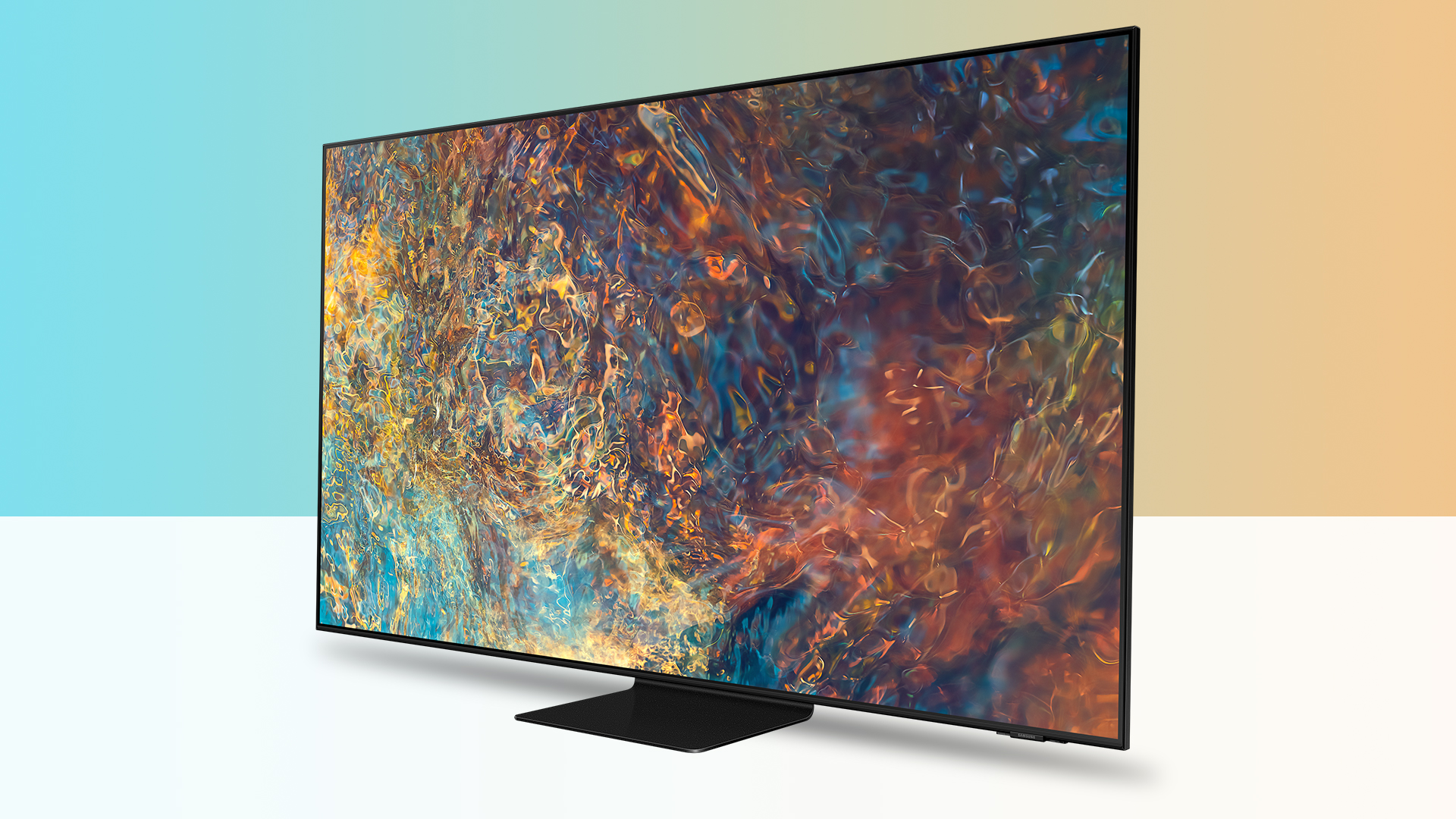I'm T3's TV expert, and I'm buying a 43-inch Samsung TV next – here's why
I'm a picture quality and specs snob, but I need to go more compact with my next set – and this Samsung TV is the perfect set


You know how when you've settled into a house over years, and everything fits just right? Much like how water always finds its level, you've got just the right sets of shelves for the space, the right amount of kitchen equipment for your cupboards, and the right TV size for the gap you have for it.
And then you move, and making the most of all your old stuff is like trying to put back together a Lego set you dropped and don't have instructions for.
Well, I've just moved house, and now I need a new secondary TV, and to my horror as a huge home cinema nerd, I've got to go smaller. The office TV is a big deal in my house, because the main TV is the one with the PS5 attached, and so is always in high demand. I watch a lot of films on the other TV as a result, and I always want to see things in the best quality possible.
Going smaller is not a problem in itself – when I'm giving people advice on the best TVs to buy, I'll usually recommend that they don't focus on going bigger, but put the extra money into better screen quality instead – but it's the particular size I need that could frustrate me.
I need to change from a 50-inch TV to a 43-inch one in order to fit the space I have available, and the level of screen tech available from most manufacturers takes a sudden nosedive when you get to the best 43-inch TVs.
It's harder to find options with direct backlights, like the Sony TV I'm replacing, meaning that you struggle to get the same brightness and contrast as bigger sets a lot of the time. 2022 is the first year when the best OLED TVs will come in 42-inch sizes, but even though that would fit the bill for me nicely, the price of the 42-inch LG C2 looks to be more than I can spare.
I've been wondering about trying to stick with my 50-inch TV, even though it would be a major pain in terms of space – again, not because I'm averse to a 43-inch TV, but I'm just so frustrated at the idea of having to splash out for something that will offer weaker image quality.
Get all the latest news, reviews, deals and buying guides on gorgeous tech, home and active products from the T3 experts
But late last year, Samsung predicted my predicament, and released a TV that solves my problem. The Samsung 43QN90A uses a Neo QLED panel that's very similar to what's in the astounding five-star Samsung QN95A – it uses mini-LED tech to pack thousands of tiny lights directly behind the screen, providing not only brighter images, but more control over local dimming.
When Samsung first launched its Neo QLED screens, you were basically limited to 55 inches and up. Then the 50-inch version came, and then this 43-inch version.
Update: This article originally stated that the Samsung 43QN90A supports 4K 120Hz and VRR over HDMI 2.1 – this is incorrect. I apologise for the error.
It's basically the only 43-inch TV in the world that puts flagship-level image quality in something that size – until the 42-inch OLED sets arrive, at least. Except that because it's a TV from 2021, the Samsung now costs about 60% of the price that I'd need to pay for the 42-inch LG C2.
So that's why this home cinema fan is happily going smaller – not just because I have to, but because I can now do it in a way where I still get to watch in high-end image quality. For cinephiles with space limits, the Samsung 43QN90A is arguably in a class of one… for now.

Matt is T3's former AV and Smart Home Editor (UK), master of all things audiovisual, overseeing our TV, speakers and headphones coverage. He also covered smart home products and large appliances, as well as our toys and games articles. He's can explain both what Dolby Vision IQ is and why the Lego you're building doesn't fit together the way the instructions say, so is truly invaluable. Matt has worked for tech publications for over 10 years, in print and online, including running T3's print magazine and launching its most recent redesign. He's also contributed to a huge number of tech and gaming titles over the years. Say hello if you see him roaming the halls at CES, IFA or Toy Fair. Matt now works for our sister title TechRadar.